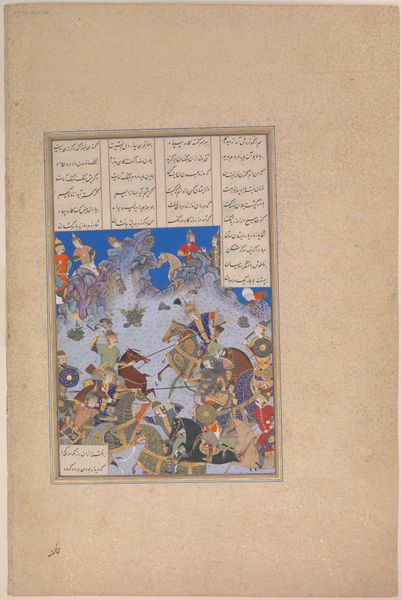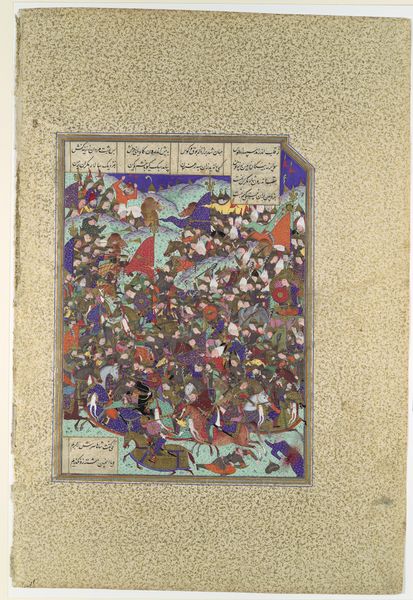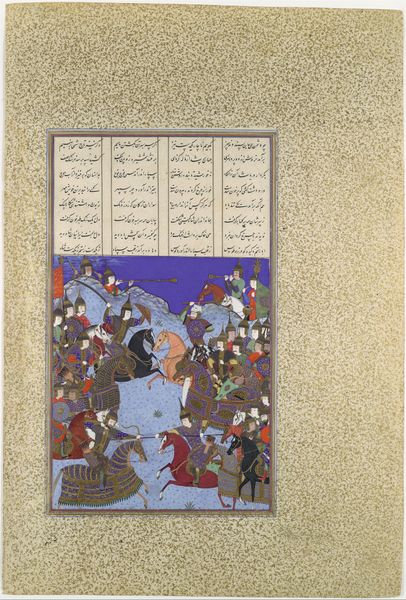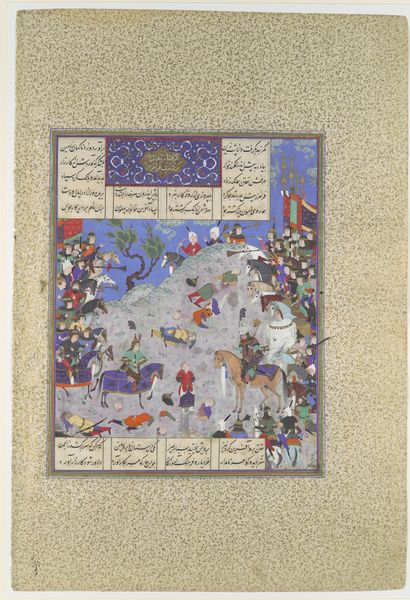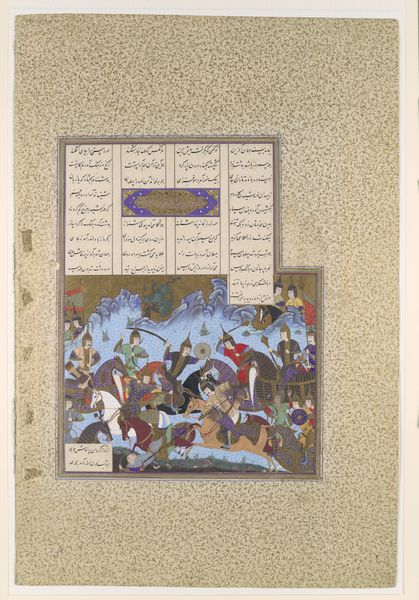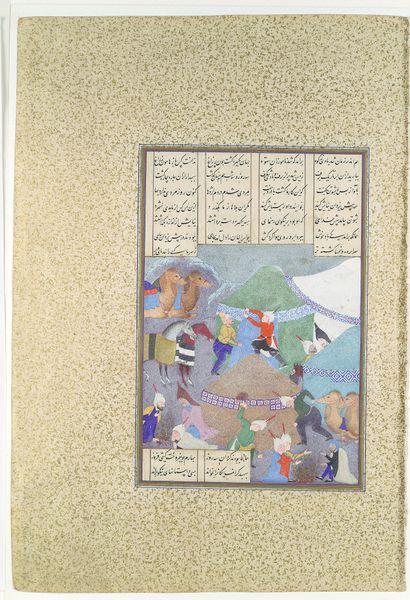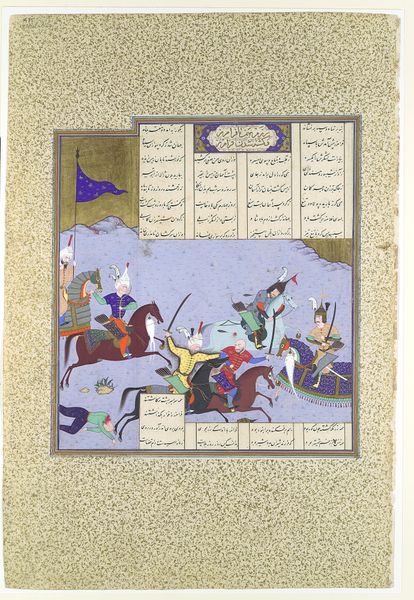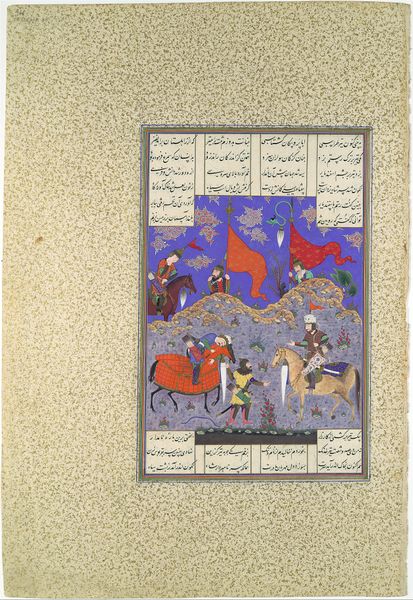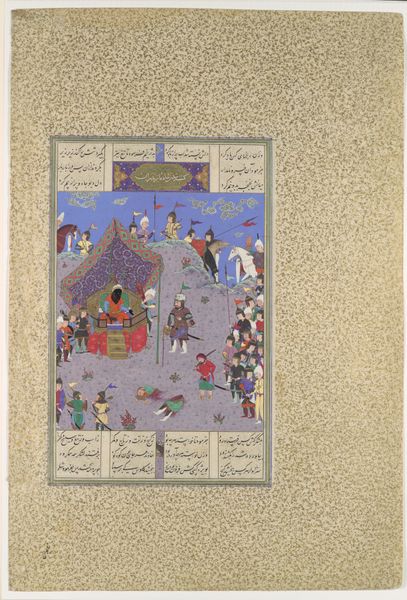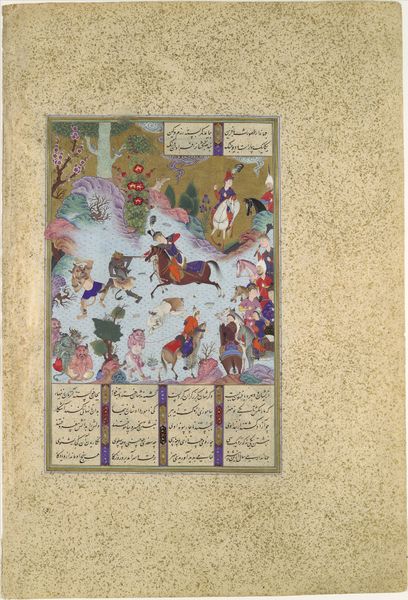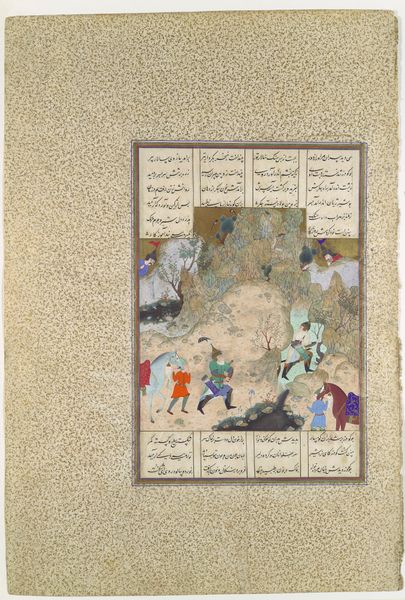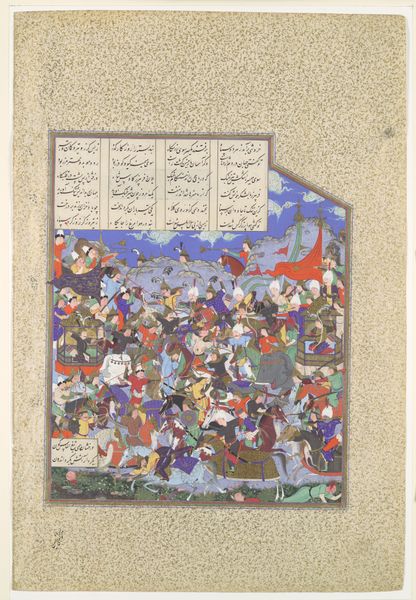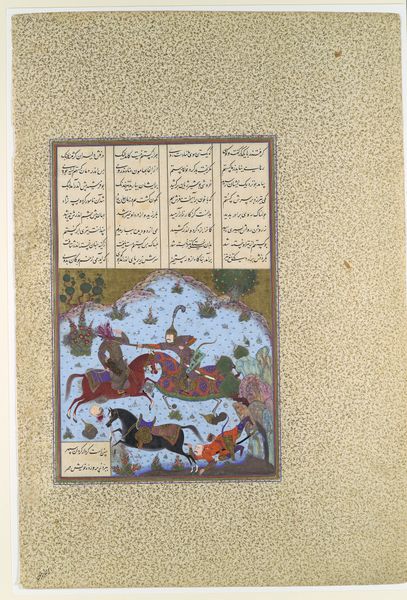
"The Combat of Rustam and Ashkabus", Folio 268v from the Shahnama (Book of Kings) of Shah Tahmasp 1500 - 1555
0:00
0:00
painting, watercolor
#
narrative-art
#
painting
#
watercolor
#
horse
#
men
#
islamic-art
#
miniature
#
watercolor
Dimensions: Painting: H. 9 3/8 in. (23.8 cm) W. 7 5/8 in. (19.4 cm) Entire Page: H. 18 5/8 in. (47.3 cm) W. 12 5/8 in. (32.1 cm)
Copyright: Public Domain
Editor: Here we have "The Combat of Rustam and Ashkabus," a vibrant watercolor painting created sometime between 1500 and 1555, illustrating a scene from the Shahnama. The dynamic figures and ornate details caught my eye. How do you read this scene within its cultural context? Curator: This miniature isn’t simply illustrative; it’s deeply enmeshed with the political and cultural aspirations of its patron, Shah Tahmasp. The Shahnama itself was a crucial text for solidifying Persian identity. But what strikes you about *how* the narrative is presented? Editor: Well, it’s full of action, figures seemingly frozen mid-battle, but there’s also an artificiality to the space... it feels staged somehow. Curator: Exactly. The composition emphasizes power and order. Even in the midst of conflict, there’s a sense of divine right, a visually imposed hierarchy. Consider the rich detail – not just decorative, but reinforcing a specific image of Persian power for an elite audience. The placement within a royal manuscript also elevated the status of both the patron and the art. What do you make of that relationship? Editor: So, it's not just a depiction of a battle but a careful presentation of royal authority using the cultural power of the Shahnama narrative? The details, composition, even the very act of commissioning such a work, were all politically charged? Curator: Precisely. And in turn, the historical importance of the Shahnama continues to bolster cultural values today. What’s your overall take away now? Editor: It's more complex than a pretty picture; it's an important record of political power, patronage, and solidifying Persian identity! Curator: Indeed, a reminder that art is rarely created in a vacuum; understanding the historical and social forces at play reveals a wealth of meaning.
Comments
No comments
Be the first to comment and join the conversation on the ultimate creative platform.
